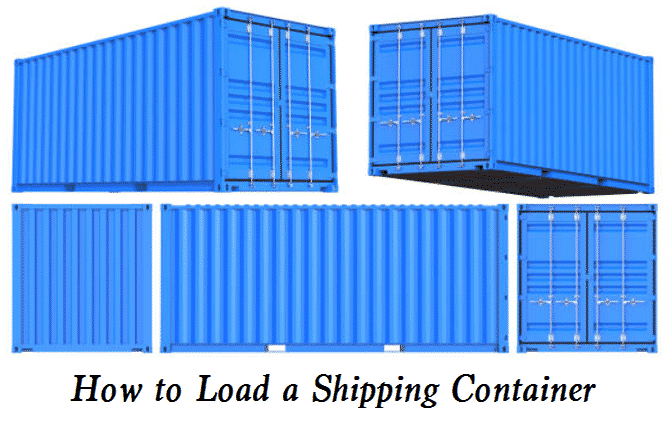With the development of container transportation, a wide variety of goods with different properties and packaging start to be delivered using shipping containers. At the same time, the number of managers and operators engaged in the container industry is increasing. In order to ensure the safety of freight quality, it is very important to load the goods correctly in the cargo container. Many cargo damage accidents are caused by improper packing. How to load a shipping container? Check out the methods and tips for container loading and avoid issues during container loading supervision.

How to Load a Shipping Container – Methods & Tips for Container Loading
Container load refers to goods filled with containers in bulk or maximum weight. What you should know during container loading?
1) When different groceries are mixed in the same box, the goods shall be distinguished according to the nature, weight, fastness of the outer packaging, characteristics of goods, etc. The goods with a firm package and heavy goods shall be loaded at the bottom of the box, and the goods with a thin package or light goods shall be loaded at the top of the box.
2) The weight of the goods in the box shall be evenly distributed. If the load on one part of the box is too heavy, it may bend or disengage the bottom structure of the box. During the operation of cranes and other machinery, due to the uneven distribution of the weight of the goods in the box, the box will tilt during the operation, so that the operation cannot be carried out. In addition, during land transportation, if the above situation exists, the trailer will also fail due to the large load difference between the front and rear wheels.
3) When stacking goods, the number of stacking layers of goods shall be determined according to the packaging strength of goods. In addition, in order to prevent the goods in the lower layer of the box from being crushed, cushion materials shall be placed between the goods stacking.
4) Partition or spacer materials shall also be added between goods to avoid mutual scratch, moisture, and stain of goods.
5) The loading of goods shall be tight and tidy, and there shall be no gap between goods, which can not only make full use of the volume of the box, but also prevent the goods from colliding with each other and causing damage.
6) When unloading at the destination, due to the failure to take fastening measures for the goods near the container opening, there have been cargo collapses, resulting in cargo damage and casualties. Therefore, after packing, measures should be taken before closing the container to prevent the goods near the container opening from collapsing.
7) Clean and dry backing materials (plywood, straw mat, cushioning equipment, spacer plate) shall be used. If wet liner materials are used, cargo damage accidents are easy to occur.
8) Containers of different specifications shall be selected according to different types, properties, and packaging methods of goods. The selected boxes shall comply with international standards, undergo strict inspection, and have the certificate of conformity issued by the inspection department.